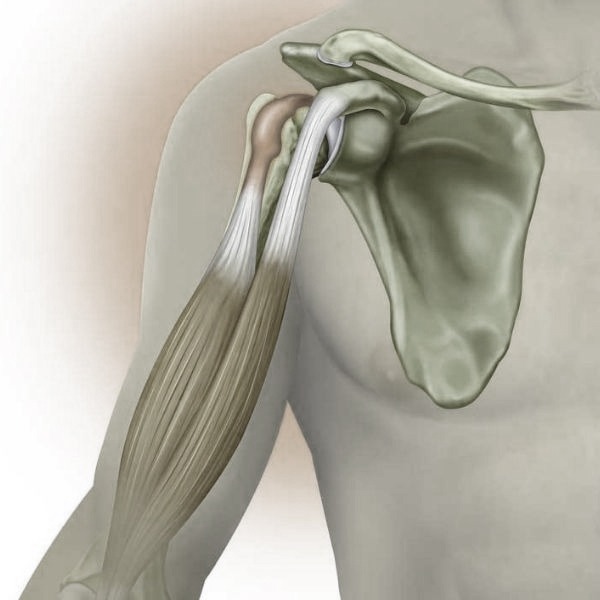Bicep Tenodesis Treatment
 Biceps tendonitis is usually treated with a surgical procedure called biceps tenodesis. Biceps tendonitis is also known as biceps tendon tear. The surgery is usually recommended for people that suffer from shoulder pain because of biceps tendonitis. The pain is usually caused by inflammation and doesn’t improve with non-surgical treatment.
Biceps tendonitis is usually treated with a surgical procedure called biceps tenodesis. Biceps tendonitis is also known as biceps tendon tear. The surgery is usually recommended for people that suffer from shoulder pain because of biceps tendonitis. The pain is usually caused by inflammation and doesn’t improve with non-surgical treatment.
Biceps tenodesis procedure is recommended for people looking to regain mobility and strength in their shoulder area. Damaged parts of the bicep tendon are removed during the procedure.
Thomas & Bigler Knee and Shoulder Institute, led by board certified orthopedic surgeons Dr. Steven C. Thomas and Dr. Gregory T. Bigler, provides orthopedic surgery to patients in Las Vegas, Nevada, while also serving areas such as greater Pahrump, Bullhead City, Lake Havasu, and Mesquite, NV.
Symptoms of Biceps Tendonitis
Traumatic injury or repetitive movement of the shoulder may cause biceps tendon tears. Symptoms include:
- Sharp and sudden pain in the upper arm
- Snapping or popping sound
- Cramping of biceps
- Tenderness or pain in the elbow or shoulder
- Weakness in elbow or shoulder
- Appearance of bruises
- Difficulty rotating the arm
- Popeye muscle or a bulge in the upper arm
Understanding Biceps Tenodesis
This is a surgical procedure that helps in treating biceps tendonitis. Biceps tendon tear occurs because of an abrupt injury or overtime with repetitive motion. Biceps tendon may tear entirely or partially. However, a majority of people don’t require a surgery and are able to live their lives without any trouble.
You may lose some mobility and strength with biceps tendon tear in your shoulder. However, it may not be enough for you to experience difficulty in performing everyday tasks. You may need to get a surgery if you want to regain strength and mobility in your shoulder.
How Does it Work?
There are several ways of performing a biceps tenodesis procedure. Most procedures fit into soft tissue and hard tissue categories.
Soft Tissue Procedures
There are two primary techniques under this approach:
- Open keyhole procedure: An opening in the keyhole or humerus is created. This is to insert tiny instruments for stitching the rolled-up end of the bicep into place.
- Pitt technique: An interlocking pattern of stitches is created using two needles. The tendon is then tied to the shoulder ligament.
Hard Tissue Procedures
The two primary techniques under this approach are:
- The surgeon will first detach the biceps tendon to create a hole at the top of the arm bone. The tendon is attached to this hole at one end. The other end is secured in place by screwing it to the arm bone.
- The biceps tendon is detached in this approach as well. However, it is attached to a button that is slid into the hole at the top of the arm bone.
Biceps tenodesis is a highly successful procedure for the most part because it’s well practiced. People report better flexibility, reduced pain, and better strength. They also find it easy to return to their activities and sports. Experts recommend getting the procedure done at least three months after the injury for best results.
Orthopedic surgeons Dr. Thomas and Dr. Bigler receive patients from Las Vegas, Nevada as well as greater Pahrump, Bullhead City, Lake Havasu, and Mesquite, NV for orthopedic surgery.
Contact Board Certified Surgeons Dr. Bigler or Dr. Thomas at the Knee and Shoulder Institute in Las Vegas, NV to Schedule an Appointment:
If you would like to schedule an appointment or learn more about the Knee and Shoulder Institute procedures & treatments performed by Las Vegas, Nevada board-certified surgeons Steven C. Thomas, MD and Gregory T. Bigler, MD. Contact the office today click here.
Serving patients from and around greater Las Vegas, Lake Havasu, Bullhead City, Mesquite, Pahrump, Nevada
